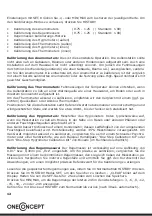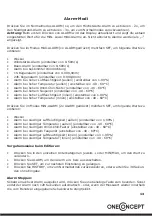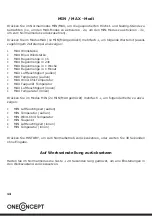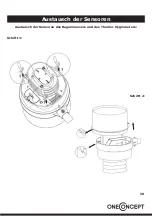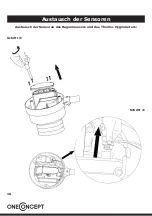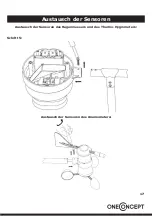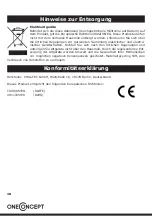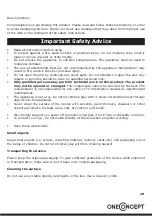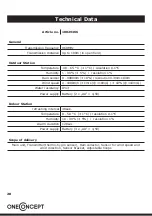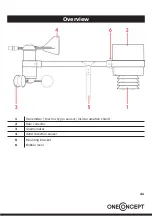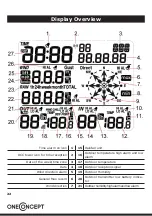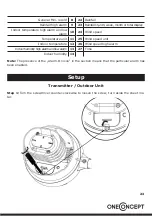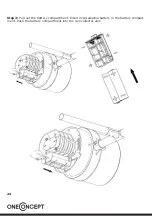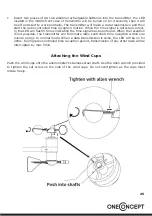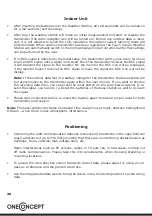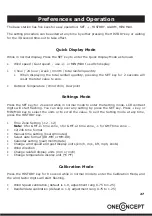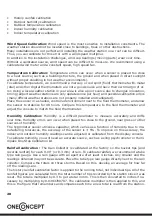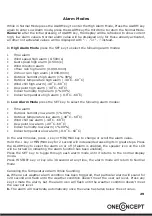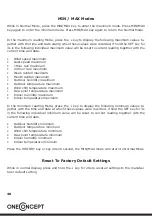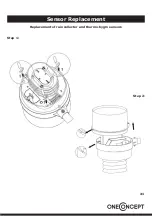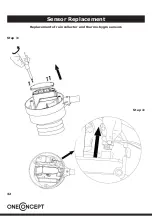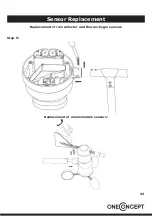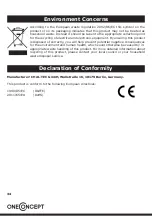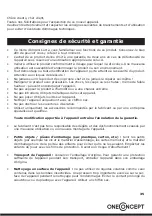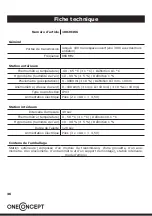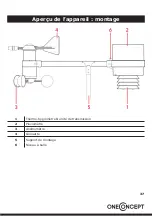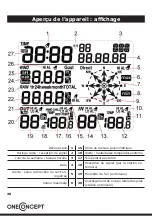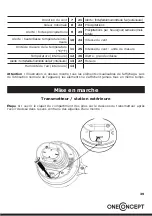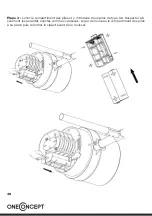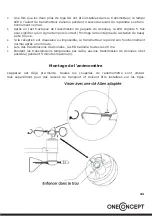
26
Indoor Unit
•
After inserting the batteries into the Weather Station, all LCD segments will be turned on
for a few seconds (self-checking).
•
After this, the weather station will make an initial measurement and start to register the
transmitter (the radio reception icon will be turned on). Before any outdoor data is recei-
ved, it is not allowed to touch the LCD, otherwise the outdoor sensor learning mode will
be terminated. When outdoor transmitter has been registered, the Touch Screen Weather
Station will automatically switch to the normal display mode from which all further settings
can be performed by the user.
•
If no RCC signal is detected in the initial setup, the transmitter will try once every two hour
to get an RCC signal until a signal is received. Once the transmitter receives the RCC signal
it will transmit the signal to the monitor. On the monitor the RCC icon will be displayed,
if the monitor doesn’t receive the RCC signal or loses the signal the RCC icon will not be
display.
Note:
If the outdoor data lost or a battery change for the transmitter, the base station will
be resynchronize to the transmitter again within the next 3hours. If you want to shorten
the receiving data time, you can press the reset button on the solar power cabinet to re-
send the signal. you have to re-install the batteries of the base station as well to re-learn
the signal.
• Please wait 10 seconds before re-insert the battery again to make a proper reset for both
transmitter and receiver.
Note:
The best condition for Radio Controlled Time reception is at night, between midnight and
6:00am – when there is less atmospheric interference.
Positioning
•
Commonly the radio communication between receiver and transmitter in the open field can
reach a distance of up to 330 feet providing that there are no interfering obstacles such as
buildings, trees, vehicles, high voltage lines, etc.
Radio interferences such as PC screens, radios or TV sets can, in bad cases, entirely cut
off radio communication. Please take this into consideration when choosing standing or
mounting locations.
•
To ensure the wind direction sensor transmits correct data, please adjust it, using a com-
pass as a reference and the printed wind rose.
•
Use the integrated bubble level to bring the device into a horizontal position to avoid wrong
data.

